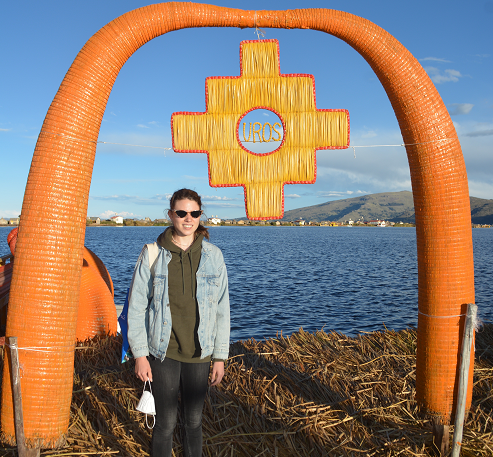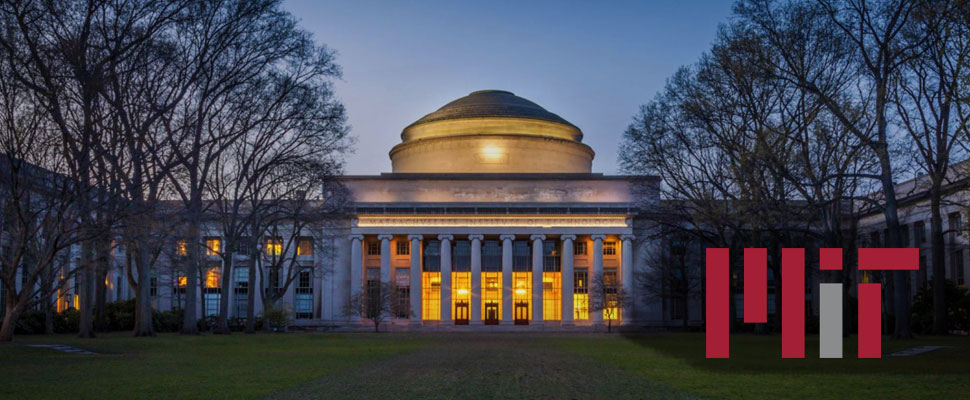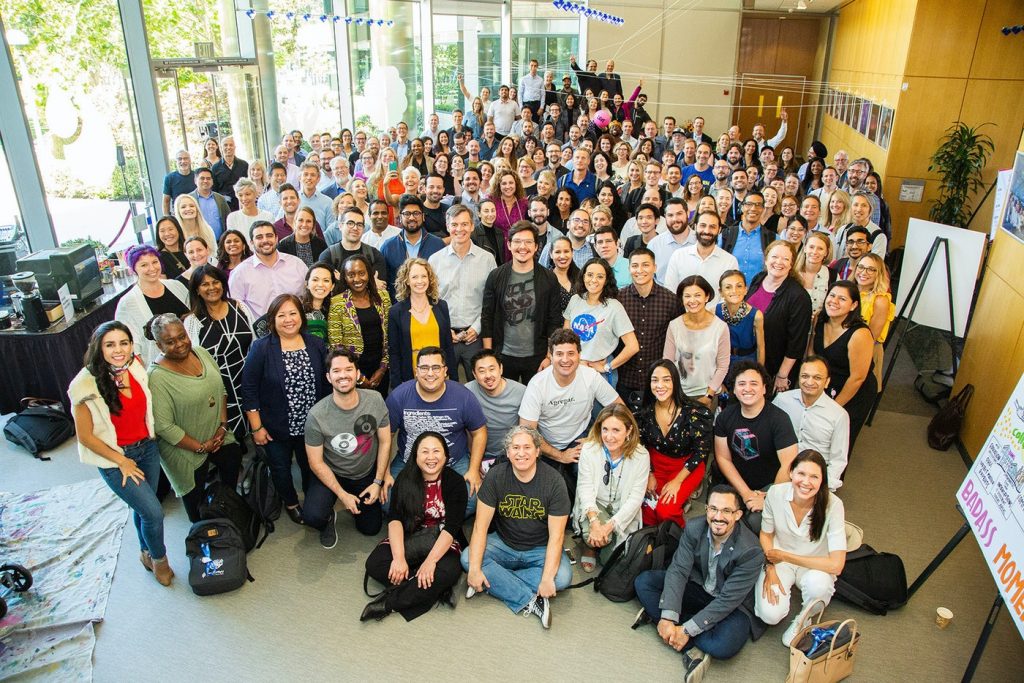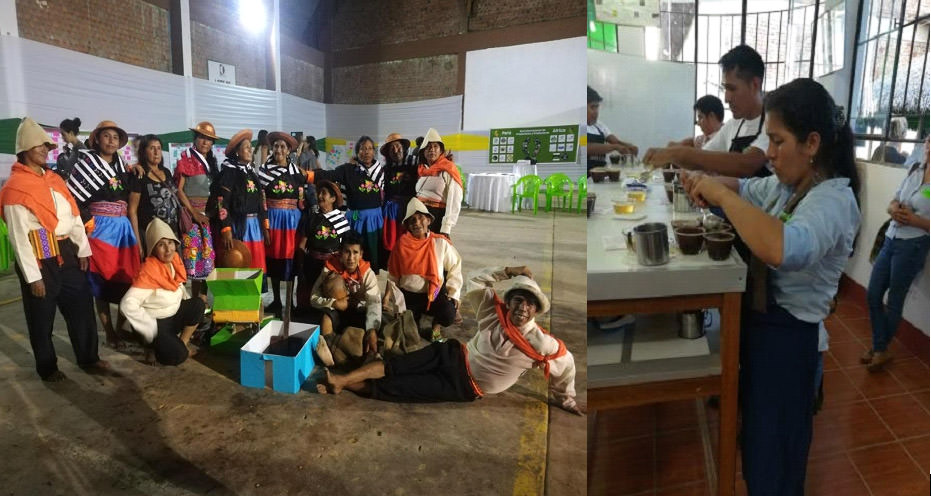This Conflict is based on the conflict between the Executive and the Legislative powers, as the Congress is controlled by a party that is not in power, having the absolute majority.
For this we should analyze what each political movement wants and how are they trying to achieve it, so they can find a middle ground or a whole new solution that should be related to a sustainable development for the country. Where they must be giving up some of their actual short-term goals to aspire for better assets in the future by a good governability.
This same logic must be applied to the private actors, on how they could operate to support governability, without decreasing their profits. Getting more involved in the social needs of the country and trying to trigger the countries potentialities into a viable commercialization with more value and technology. Considering also that a more prepared workforce, even though would create more expenses immediately, could improve their own company’s production.
This conflict is about the Peruvian development and how the actual interaction between politics and economic powers are complicating its achievement. They want the Peruvian development in different ways, on one side, the actual president for 100 days, Pedro Pablo Kuczynski -known as PPK- and leader of the party Peruanos por el Kambio wants a right winged development with a social component, but Keiko Fujimori, leader of the strongest party in the Legislative power (more than half of the Congress men), and son of a former President now in jail for crimes against humanity, is not letting him make some structural changes about economic issues that experts said are needed.
On the other hand, Frente Amplio, that show less knowledge and ability but in some ways more credibility, is firm about their left winged policies but without enough representation in Congress they can’t do much as they have no allies in terms of ideology, even though a lot of young and oppressed people support her leader, Veronika Mendoza, who surprisingly supported PKK in the second row of elections against Fujimori because of her corrupt background.
The CONFIEP on the other side, as the most powerful economic businessmen group in the country -know for leverage to moderate left winged former presidents- seem to be fairly comfortable with PPK plans, but according to some left winged experts they are against some sustainable social policies against market efficiency.
This conflict is perceived as an everyday matter, by news, interviews, and from what people in Peru and through social media is discussing. This calculated struggle between the Executive and Legislative powers is overlapped with the discussion between right and left winged policies though issues like our primary based export model and out necessity of industrialization, a discussion still present in the collective thought after the elections. This shift was supported not only by Frente Amplio but by Accion Popular, the 4th force in the Congress.
The first presentation of the president in the Congress was a clear sample of what is happening today, the Congressmen received PPK yelling: “Fuerza popular, Fuerza popular…” Moreover, in the 40 minutes of presidential speech Congressmen of Fuerza popular (more than half of the 130) didn’t clap even once.
The first relevant dispute so far was when the Commissions’ presidencies had to be chosen, at the end the ruling party retained the Presidency of Economy, Justice, and Commerce, but Fuerza Popular won the Commission of budgeting, a very important win as they have the Congress majority.
The tensest moment was when the Executive ask for legislative faculties in 5 topics (economic reactivation, reduction of IGV (taxes), security, fight against poverty, water and sanitation, and reorganization of Petroperu (only public petroleum company) supposed to be managed for the new First Minister, part of PPK close direct group but accepted by the Congress: Fernando Zavala.
At the end the faculties where accepted just for 90 days, in its totality for topics like security and partially in topics like economy. Nevertheless, Fujimorism was clear in their intentions, as one of its spokesmen said to the press: “We don’t have a political agreement.”
For some experts Fuerza Popular is looking for legitimacy, they want to see PPK fail to get the presidency in 5 years, others could say that Keiko wants her father out of jail as soon as possible as she is not cooperating enough trying to block the initiatives of Peruanos por el Kambio.
Context
The context can be seen at least in two ways:
- The early national scenario about political ideologies and economic models.
- The historical context where Peru never really make the most of its economic booms produced by natural resources.
First, it’s important to mention that for the first time in its modern history Peru is maintaining an economic model for more that un decade, with is already a big achievement considering the politic and social volatility of the country. Considering past bad experiences from the right wing and from the left-wing politics. For example, Luis Velasco Alvarado a left winged general that took the power by a coup, and tried to industrialize the country but did not know how to do it, giving land to farmers that did not knew how to manage them in sake for equity.
Our last President, Ollanta Humala, presented himself as a left-wing candidate, a game changer that really understood the needs of rural Peruvians forgotten by the status quo maintained by local elites. But at the end, during the second row of elections (between the two most voted candidates) he presented what is known as a “Hoja de ruta”, a document under specific economic and political limits and characteristics that he followed, based in right winged liberal economic measures. Some say that happened because of some kind of pressure imposed by CONFIEP. Others think that he done that just to cultivate the moderate and part liberal right wing votes, against Keiko Fujimori. Either way, at the same time was known that he had certain relations with Venezuela’s Hugo Chavez, receiving money for political support.
Some experts may say that because of this politic-economic stability Peru has been doing great, as one of the most solid economies of Latin America in terms of economic growth. But others more skeptical attribute the biggest part of this to high prices of some raw materials because of China’s necessity of metals to build infrastructure and Peruvian mining resources. The problem is that this necessity is starting to end, or at least is losing its demand as Peruvian growth is less than half from what it had 10 years ago, from 9% to 3-4% approx.
Peru is one of the most diverse countries in the world, rich in natural resources that never knew -or didn’t want- how to make the most of that. That’s why a very popular quote is well known by Peruvians: “We are a vagrant sitting down in a chair made of gold.” The necessity of making more money faster without a planning related to local potentialities or people with a sustainable log-termed view. One precedent could be find in the 1990s when the Washington consensus was adopted by Latin American countries, most of them ending with negative consequences, when Alberto Fujimori, father of Keiko, closed the Peruvian institute of planning in his government calling it a communist practice.
About Peruvian booms we can guess that they were not used in a smart way towards sustainability, just to mention some of them:
- Boom of guano (1840 – 1870): In a context of world high demand as a fertilizer, we just exploited it and rise out importations.
- Boom of rubber (1890-1910): Huge international demand and a favorable context, we just exploited it, and exploit the Amazonian population, creating family fortunes, leaving only roads to one Amazon city.
- Boom of fishing (1960-1980): High demand because of international conflicts, temporal depredation of the resource, investment only in fishes’ oil and flour, promotion of jobs cost cities, investment in social infrastructure.
- Boom of mining (2006-2015): Because of high international prices product of China’s insatiable urge of metals to build infrastructure. We just promoted commerce around mines that collapse after their exploitation, and by the mining canon. No serious promotion of industrialization or productive clusters.
If we consider economic and anthropologic research we can go even deeper, ironically we can see the same in many more countries in the world where because of their natural richness they are predestinated to poverty, because inefficiency, corruption, and short sighted view of part of the socio-economic elites. Just to mention an example, and trying to get out of Latin America for a while, we have South Korea, a country that lacks from natural resources, and Ghana, a natural resource enriched country possessing industrial minerals, hydrocarbons, and precious metals. In the 60’s the GDP per capita of Korea was less than half of Ghana’s, but in 1977 was already a car exporter, semiconductors, and products of high manufacture. Korea applied all the recipes that the developed countries, the World Bank, and the IMF say poor countries should not follow, subsidies, State plans, interventionism, investing in their people and in products with added value (and the same happened long ago with UK, USA, and Japan).
We have exceptions, of course, Like Australia or Finland, countries with natural resources that managed how to develop, first with middle-technological added value, and then with more sophisticated products. That’s how Nokia was a wood enterprise once. All that is needed is political will, we can just see the case of India, how it decided a couple of decades ago to invest in technology, betting for its own potentiality, its low-income people. Now Bangalore is the only place that could stand against Silicon Valley. They created the software and win the biggest margin, while Peru still exports the raw materials and then buy the final product from China or USA for 10 times the price -giving an ultra-conservative comparison- because of added value and a service base portfolio.
Just to be fair poverty is a structural problem in most Latin American countries, taking away only a few exceptions like Uruguay and Chile in some ways. After the 90s catastrophes, regional poverty stayed in 25% of the population and extreme poverty in 11% according to international standards, but really considering local standards the right percentage could be closer to 40%, now we are getting near to 30% according to CEPAL, but let’s be clear about something: Who can live with $1.25?
The formula is not a mystery, more investment in education, and in innovation, science, and technology, while USA and Canada represent the 42% in world’s investment, the European union represents more than 28%, while Asia the 23%, living Latin America with only the 1%. Yes, 1%.
Going even deeper we find that Peruvian structural systems of transportation, as the capital of American Spanish Viceroyalty 500 years ago -because of its strategic geographic position-, were build not in relation to the country’s necessities to promote internal commerce but to export everything through the sea, having the only American capital city that lay in the sea, Lima. That could explain in some level the extreme centralism in Peru, were sadly, as some could say in a joke tone: “Everything happens in Lima or doesn’t really happened”.
Stakeholders
Peruanos por el Kambio: It’s the party of the elected (three months ago) President Pedro Pablo Kuczynski, known as PPK (he is the oldest President democratically elected in the world history), after achieving only the second place in the first row of elections. He it’s right winged and he do not believe too much in planning, although he is being progresist and he is showing social awareness so far. He is viewed as some as a USA citizen, because he had double nationality. And his voters, (right wing and center right) are the end, in the second round of voting she also received the left winged support, promoted by Veronika Mendoza, against corruption. We can say that the international community is also with PPK.
Fuerza Popular: The party of Keiko Fujimori, the daughter of the former President, Alberto, who is now in jail because of crimes against human rights and corruption in his mandate. She won in the first row of elections by far so now she has more than half of the congress (legislative power). Although she is right winged she is populist (assistencialist) what harms a poor country like Peru searching for sustainability. He party has been involved in many corruption cases, and many of the people supporting her father is now around her in one or other way. And her supporters: older right wing people or authoritarian right winged, and very poor people that received in some level assistance from her or her father or value his role against left winged oriented terrorist groups. Some would also consider their links with drug traffic.
Frente Amplio: It’s the left-wing party, made up by the unification of many small left winged parties, the leader Veronika Mendoza got the third place in the previous election, losing after PPK in the first row just for a few votes. She is still young and one of the most powerful women in the country according to a recent study. Even though the is left winged (more State, more planning) she supported PPK in the second row of elections, against the evident corruption in Fuerza Popular.
And her supporters, left winged and younger progressive middle ground groups, and poor groups of people in the Andean zone.
CONFIEP: The organization of businesses and industry in the county, they are very powerful and wealthy, clearly right winged, they represent in a way the biggest part of the Peruvian elite and seek development in an efficient but inhuman way according to some experts, others think that CONFIEP should have more weight in political decisions (besides lobbying).
Timeline
1990-2000: Fujimori closed the Peruvian planning institute calling it a communist practice
1990-2000: 228 sale, concession or liquidation operations were made for public companies, in 10-15% of their original price.
2009: President Alberto Fujimori was captured in Chile sent to jail
2006: Boom of mining
2009: Presidential Elections – Keiko 2 place, PPK 3 place
June 10, 2016: First row of elections
First Debate: PPK is accused of being a USA citizen and not Peruvian, of being a banker that is going to give more taxes to poor people
Second Debate: PPK attack Keiko with some facts: Her brother Kenyi Fujimori was found with 100 kilograms of cocaine in his company.
Jose Chlimper, General secretary of Fuerza Popular, gave fake recordings to the journalists trying to defend one of his allies, Joaquin Ramirez, who had very strong links with drug traffic.
June 5, 2016: Second row of elections
July 28, 2016: PPK was presented as new president and was not applauded by Fuerza Popular.
August, 2016: Executive asks for Legislative faculties for Security issues – The congress gave complete faculties.
Legislative faculties for Economic issues – The congress gave only partial faculties to the Legislative.
The election of three directives in the Central bank that have links with the Fujimori’s party, when many from the party of PPK vote against them. One of them was José Chlimper, General secretary of Fuerza Popular, that was accused for creating false recordings in elections.
The Congressman of Fuerza Popular Luis Galarreta defended PPK considering that the Minister of International Relations of Venezuela insulted him, and that the Venezuelan Ambassador in Peru should be questioned. She said that PPK should take off the suit of a banker from the USA and should take care of the social debt of Peru.
The journalist Fernando Vivas considered that PPK is defending Keiko and that he is not going to do anything against her to harm her possibilities to be president in the next elections. This because he wants to work in cooperation with the Legislative power.
November 2: The Vice President of Peru, Mercedez Araoz, said that the voting for the election of the directives of the Central Bank was unfair because of an abuse of power, and that Jose Chlimper should not be considered because he has corruption investigations.
November 12: Some Congressmen of Fuerza Popular say that the Government is supporting the big enterprises and waiting that their productivity “gush” (give only some extra money from their profits) to the poor people.
December: Fuerza Popular tries to fire the Minister of education, according to experts because they want to make profit with private education of low level. We do not know if PPK will defend him, if hi do defend him, his other Minsters could be in danger.
ANALYSIS OF CONFLICT DRIVERS
As this is a very complex issue with many layers it could be analyze from different drivers. Above all, because it could be perceived from many different angles. As each of the stakeholders want at the same time the same thing, power, and also different thinks, in relation to the path that the country should follow to achieve development.
Moreover, its comprehensible to analyze this conflict in first place based on interests; as politics and business people they don’t let emotions come in their way. On the other hand, the citizens that support each of their parties play an important role, and are more often driven by emotions than by reason, being also easy manipulated, considering that Peru is a country with a low-quality education and high rates of poverty.
In the same logic, this conflict it’s not mainly based in a cognitive driver, while the main stakeholders, the ones that make the decisions, know exactly what is happening and no frame can make them change their mind. While at the same time all of them reframe reality constantly to manipulate society, so while it is not the most important driver it should be analyzed.
About the structural driver, it should not be considered as the most important because politics can indeed change laws to change the conditions of the conflict, so it is not really a barrier for them as politics. (even though there are some political mechanisms that should be address that delimit the conflict’s possibilities). We can also say something similar with business people as they work as lobbies. In the same way justice is not what is motivating them to be in conflict but their own interests as a party. Furthermore, there are structural issues related to the conflict in terms of inequalities in society and natural resources management.
Interests
Talking about the Interest driver it can be said that each stake holder has their own goals and objectives in order to get more power. Those dynamics are basically based on the main conflict, between the Executive and Legislative powers.
First, we have the Legislative power, which representative is the party Peruanos por el Kambio leaded by the president PPK. Because of his advanced age, his successful carrier (having a name to take care of), and considering the fact that he is already a millionaire, according to most specialists what he wants is a good government. “He wants a good government so he can happily go to the other life” is a quote often repeated by many Peruvian supporters.
The way to achieve this good government is what some people do not like, considered the most efficient but the less caring option. We are talking about a Neoliberal perspective, but in the case of PPK we can take out of the equation the “Neo” part as he is not just limiting his government to support big corporations or efficiency, to achieve a long-term development. So, this is his second main interest, take care of the good people, not by giving them fish but by teaching them how to fish, giving them the basic needs and the proper tools to achieve it. Some could call this social justice.
For this point, we can mention Johan Galtung, about his theory about the two levels of peace. For him peace does not means just absence of structural violence but social injustice. And if it is true that in one way or another most stakeholders say that the support justice, only the ones that promote a sustainable justice are really trying to make a change. As only sustainability could give people the tools to replicate welfare, and stop dependence, that is bringing more corrupt leaders that use manipulation to get votes. Furthermore, Galtung’s research reframe peace in a way that other policies can serve as a causal of it, to get not only a positive peace but an organic development. In this case would be: based not in raw materials but in added value, in people.
Going back to PPK’s interests, we can talk about some of his government goals, which are planned in coordination with CEPLAN: National center of strategic planning→ Here we find a difference between Fuerza Popular, Keiko Fujimori’s party, as she does not support planning, preferring short-term goals and efficiency. In first place, he wants to finish the extreme poverty, unemployment, malnutrition, illiteracy, and child mortality. And reduce poverty at least in 10%. Second, he wants to reach an income PPP between US$8.000 mil and US$10.000. Third he wants a GDP of $244 million, the double of what the country have now, and an economic growth of 6%. Fourth, He wants to multiply by four the exportations of the country. For his party, and for many experts the formula to achieve this is by making serious reforms in: infrastructure, health, and education. Moreover, in the APEC (Asia-Pacific Economic Cooperation) meeting that Peru hosted on November world leaders as President Putin, President Xi Jinping, or Mark Zuckerberg, supported the formula, along with an effort to raise the commercial agreements and technological transfers
Talking about Fuerza Popular, her main goal is to be president in the next elections, 5 years from now, so it’s also a conflict about how well she must perform and how bad PPK must perform, to be seen as a good candidate in comparison to him. Moreover, she is also interested in set free his father, the former President Alberto Fujimori, from jail. About her view to develop the country, she does not support the idea of a long-term sustainable development, as she prefers to maintain the status quo and improve the productivity. But she doesn’t let this make her loose popularity, as she is one of the most populist leaders in America. She dedicates to give all kind of gifts to win votes and for that she is eager to use some of the thousands of millions of dollars that her father won when he was president and never returned. Her interests then are related to sabotage PPK at all costs so she can tell the people five years from now: “That is why you should have voted for me 5 in the past elections.” Erasing in some way all the criticize that PPK made before this election.
About Frente Amplio we can say that its leader Veronika Mendoza wants in first place the same as Keiko Fujimori, to be president in 5 years. But there is a huge difference between both leaders, because Mendoza really shows a compromise with the development of Peru. As most left winged politics in Latin America she is more focused on State and communal enterprises, so she is the worst option for business groups like CONFIEP. Some experiences in Latin America make us think that left winged politics are all populists but that is not always true.
Mendoza is one of the few candidates that promoted the industrialization of the country, to stop exporting raw materials and give added value to what is extracted from mining. This along with other initiatives that promote sustainability by investing in industries related to the potentialities of the country, like empowering farmers to promote agriculture. While she did not have the best vision for the country, according to some respected right wing analysts, like Jaime de Althaus, she is seen like a woman with values that wants to promote social justice and human rights, and there is nothing against it to make us think that she is not interested in achieve this.
About the last stakeholder, the CONFIEP, its interest is related to make more profit and to achieve efficiency. Besides the industries in which Peru is already competitive, most of the members of this economic group is not interested in promote industrialization. It’s a matter of efficiency, is cheaper to import than to produce in the country in the short and medium terms, so they don’t usually support any kind of long term planning. It is not like they are the bad guys of the movie, they are the ones that promote investment in the country and activate the economy. It is just that they are business people, and besides corporate social responsibility, they do not have a responsibility to promote social development.
They will always prefer to privatize industries, which is what Frente Amplio do not want. CONFIEP sees every think with an economic optic trying to improve competitivity. While they are not against the reduction of poverty most of them see the issue as one more indicator. This means that they prefer to attack the issue systematically while the production raises. Critics like Cesar Hildebrandt, accuse them to be focused only in economic profits, and add that they are not interested in a social reform with more equity.
Cognitive
About the cognitive driver, we can say that stakeholders and their supporters has a particular frame for the other stake holders, depending if they support them or are against them. A frame that keep on getting bigger and bigger, that do not see the positive aspects of the shareholders that are not align with ourselves but only the negative aspects.
Talking about PPK, his enemies, AKA Fuerza Popular, see them as too old to be the president, as too white, to North American, to cold, and too much as a banker. As someone that has no connection with the poor, that can´t handle the government and that should probably leave the Presidency.
In the case of Keiko Fujimori, and trying not to be biased, many of his advisors have proven links with corruption and drug trafficking. So, it is not hard to frame her and her and his advisors as what they are. Moreover, the people that supports her are mainly from two groups, a small part formed by people who likes authoritarianism and order, and a big part from uneducated people that received aid from her father 2 decades ago (one of the good things that her father did). Furthermore, the President frame Keiko and her allies as people that is looking for confrontation.
About Frente Amplio, all the other stakeholders often frame them in the same way. As communists with old ideas that never had success, that want to share everything with the people that do not deserve the same as the people that obtained with effort what they have. Moreover, PPK talk about her also in a positive way, as a woman that has a strong conviction for poor people, after she supported him against Keiko Fujimori in the second row of elections. Although, a few months before that he said that she never did anything in her “insignificant” (perra) life.
The CONFIEP is framed by the people that not support them as mercantilists that only want money for themselves and that not care for the country or the poor people. As a soulless corporation that put profits above everything else. As the elite that never was connected with the people’s issues.
In many ways, I do not think that the identity elements block common views or each other, because all of them know perfectly how this political game works.
For this analysis, I can mention Deutsch, as he uses psychology on how to make conflicts productive. This in relation to the perception of what constitutes a constructive or a destructive conflict. Quoting him, contact and visibility of differences, perceived incompatibility, and perceived utility of conflict could manage the conflict. Analyzing and traying to figure out how to approach at these variables we could resolve conflict, as for Deutsch the conflicts are not completely an objective phenomenon, and the correlation of perceptions can change everything. This means that the two parties in Congress mentioned could improve their image to be good options for the next election. While the CONFIEP could improve their image to work more closely to the government. And therefore, the President could have more freedom to achieve their governmental goals.
Emotional
About the emotional driver, we can assume that is not very present in the leaders of each stakeholder group, because they know exactly what they are doing and they are not driven by emotions. There could be an exception in the case of Keiko Fujimori, as her father is still in Jail. The President already said that he could accept to release him for humanitarian reasons if he is ill, but we do not really know what is happening behind curtains.
In the case of the supporters is the opposite, as Peru is a country with a lot of poverty and a very precarious education, people are easily manipulated. Let´s be honest, this happen also in rich countries like the USA, so we can just imagine at which point could it get in a country like Peru. Sadly, this is well exploded by politics that use all kind of tricks and smoke screens to win support.
Structural
It is difficult who has the power right now between the stakeholders. Of course, the President is above the others, but Keiko Fujimori is undermining that power constantly and we don´t know what to expect. Besides this the CONFIEP is the invisible hand that it is always there as a lobby, knowing that politics come and go but they will still be there no matter what.
For most analysts, Keiko don’t care if she must destroy the political system of the country as long as she achieves her goals. So, her only concern is to get more power day by day. Some analysts, like Rosamaria Palacios, the less conservatives, even said that her plan goes beyond this. If the president loses enough legitimacy from society, and if the 2/3 of the congress vote against him, he could be taken out of power. This is really serious and could destabilize the complete system. Right now, the Executive and the Legislative are in a very serious confrontation.
Jaime Saavedra, Minister of education is one of the few Ministers in the history of the country to transcend a Government. While he is doing a great job improving the education: Peru got out from the last position in the international education test PISA surpassing Brazil and becoming the country in America that climbed more positions in the ranking. However, Fuerza Popular wants him out, saying that there is corruption in his Minister (even though is clear that it has nothing to do with him) because by his evaluations many universities that support this party are losing money and power.
Moreover, Fuerza popular is bringing to the table a dirty war full of lies saying that the State wants to promote homosexuality and promiscuity in elementary school, what is very shocking in a conservative country like Peru. The last news is that Fuerza popular is using a legal resource to fire the Minister, and the President have a few days to decide if he is going to defend him or not. The tricky part is that if the president defends him the Congress can fire all the 18 Ministers. But the Congress can only do this one time, as if it tries to do it again, the President can close the Congress. In the meantime, society considers the Minister as the best asset of the Government.
So, we have analysts, like Luis Davelouis, that say that the President should defend the Minister now, because Fujimori is not going to stop with this, throwing out other Ministers and replacing them with her own people. Moreover, they say that the time to do it is now because later the President could not have the support of the people to do it. The President is right now trying to calm the waters and promote negotiation, but it seems that Fuerza Popular do not want to talk, so he also said that he is not going to allowed Keiko to minimize him.
Another important factor in the structural power is the media, above all because of how easy is to manipulate poor people in this country. This is when Frente Amplio have the most power, because of the reach that Veronika Mendoza have with the young in the middle class and in the poor spheres by social media. Therefore, this party is also an important stakeholder to consider.
ANALYSIS OF INTERVENTION FROM RESEARCH
At this point, where it seems that there is no light beyond the tunnel, we should show an experience of sustainable development in Chile, where they used shared value strategies with good results.
A few Chilean companies have started recognizing the opportunities that shared value represents, but many additional possibilities exist. Three compelling opportunities with the potential to have a powerful impact on poverty, education, and health are: a) increasing micro, small, and medium enterprise competitiveness; b) bridging the skills gap that Chilean companies face; and c) promoting healthy lifestyles to decrease obesity.
A few months ago, FSG launched an effort to further explore how shared value can create more widespread prosperity in Chile, a country that epitomizes many of the challenges of countries that are trying to extend the benefits of economic growth to a broader portion of the population.
Chile is now at an inflection point. While the business community has contributed to, and benefited from, the growth and development of the last decades, social challenges pose a very real constraint on its growth potential. Chilean society views companies with suspicion. This dynamic is likely to worsen unless companies can find ways to authentically connect their business strategies with strengthening Chilean society. Likewise, it is vital that the public sector recognizes business as a critical piece in its development agenda, and civil society is able to balance holding businesses accountable and accepting legitimate business imperatives. Failing to do so will lead to squandering an important engine for creating shared prosperity.
Examples:
BHP Billiton and Codelco, two of the largest mining companies operating in Chile, are pursuing shared value strategies by fostering innovation in their supply chain through their World-Class Supplier Program. The program is increasing the competitiveness of small and medium local suppliers and had an estimated net present value of $121 million in savings as of December 2012 for BHP Billiton alone.
Bci is a major Chilean bank that has modified the credit evaluation criteria to expand financial access to entrepreneurs through its Nace business line. To enable its clients’ success, the bank also offers access to expanded networks and support in business planning and other non-financial activities. Bci estimates that over two thirds of Nace’s clients would not have had access to credit if the program did not exist. Some 15,000 new jobs have been created through the program.
PROJECT GOALS, ACTIVITIES, AND EVALUATION
This experience in Chile make us think about how cooperative governance can be stimulated by a well-developed strategy in which many stakeholders can be included, conserving their own particular goals. This proves again that good intentions are never enough to accomplish a multi-party enterprise, because without some ground rules everyone is going to pull to their side, it is just human nature.
My theory of change comes from the previous reflection, using a cooperative approach can make viable governability in Peru, and moreover could put an end to the confrontation between the Executive and the Legislative powers. In order to see this working is imperative to consider what each stakeholder want, trying to make a strategy that address both points of view. The same logic is applied to Frente Amplio and the CONFIEP, which goals are in some ways opposed without a joint strategy.
This mechanism is inspired in the Conflict resolution’s Game theorists that Professor Catherine Gerrard thought me. We will be using a systematic study of problem-solving in cases that was first used by behavioral psychologists. This is used to model the ways in which people engage in conflict, going beyond of dichotomies like functional-dysfunctional. The key principles are the assumption that people do rational choices and the assumption that we have the perfect knowledge. As this is an innovative project we have to improve their mechanics in the way, this could be tricky at first, but at the same time we will be creating content that as a country can implement later in other countries in cooperative exchanges.
Before going deeper in the Peruvian case I believe that a broader point of view is needed to understand the reason why of this theory of change, about a conflict mediation that is based in a development strategy.
In this Shared value strategy, businesses promote models of participative development, but countries make the rules and monitor the evolution of the practices. While society actively participates in the processes, making profits for the companies and for themselves, what creates more cohesive communities. In this dynamic.
There are countries like Chile or India, and brands like General Electric or Nestlé that are already following these strategies with success. Companies can create shared value in three ways: reconceiving the products and markets, redefining productivity in the value chain, and strengthening local clusters. It’s also precise to underline the social necessities of a particular group of people and the competitive advantages that could bring resolve them.
A Shared value strategy should not seek to replace public development policies, but to complement with them, trying to create a virtuous cycle. A dynamic in which every sector should have a role in an organic system.
Another important approach is the Collaborative governments, and a good example of this is the work of Tina Nabatchi and Kirk Emerson. They say that Collaborative government regimes (CGR) need three dimensions of analysis: Efficacy of actions, externally perceived legitimacy of outcomes, and viability of adaptation. Through three levels of performance to achieve sustainability: Actions, outcomes, and adaptation.
Nevertheless, Professor Emerson told me that collaboration cost a lot because of the implementation transactions, and that it’s not often implemented because it takes a lot of time and many ideas. Concluding that: “It is one of those things that people don’t talk about.” Therefore, we are hiring FSG to develop our strategy, using its experience in countries like Chile.
At this point it would be pertinent to mention Lewin, as his field theory method analyzes causal relations and build scientific constructs using psychological explanations of behavior, consideration of the total situation, systemic causation instead of historical, and an approach characterized by dynamic. Moreover, it is important to integrate the individual behavior of each stakeholder with the context, as one does not exist with the other.
Goals
Our main goal is based in consensus, not based in give and take but in an interspace negotiation, to create an integral strategy in which every part can find its particular goals included. In this way, all forces before opposed will now have to work together to see their own interests achieved. Therefore, we selected the interest driver to transform this conflict, because it is the best way to reframe the role of all parts and join forces to develop the country while pursuing the party’s agenda. As every side will have a specific role there are no overlaps or competing issues, so the main goal is ultimately change the culture of politics in the country, the language and later, the practices.
Going deeper, the main reason for which I choose this kind of strategy to solve the conflict in Peru, that for some traditional policymakers could look just more as a development project than as a conflict transformation. The reason is that right now, as things are going the dynamic between the Executive (including Frente Amplio and big part of society) and the Legislative (including big part of the CONFIEP and other private interests) is unsustainable, at the point that they could end destroying each other.
This sustainable development model must work beyond governments, as a policy of state, so there will not be hidden interests that could create barriers to the operation. This is especially important in a country like Peru, where the new ruling party always change everything from the previous mandate, just show society how they came with their own policies and how better is from the previous one. A very stupid strategy, yet almost always practiced.
In this vision, every stakeholder will become a shareholder, and even though the parties will still have their own agendas, the mindset will be: what can we accomplish together instead of what can we do to win support at the expense of the other. To aspire to reach this point, we must have clear how could we manage to articulate each main demand of the shareholder.
In the case of PPK, the Executive shareholder wants to achieve its own government plan which was mentioned before, and end the mandate with positive results in indicators and society support. With this strategy in mind the Executive will stop blocking the Executive policies because it will be more concern in winning support in other ways. In the same line the economic lobbies should change its own dynamics. Let’s remember that in Peru a President can have two consecutive governments, and considering the age of PPK he is not going to be a Presidential candidate 10 years from now, so this issue should not concern the other political shareholders.
About this point, as a secondary confrontation Fuerza Popular and Frente Amplio should not see each other as enemies any more. Because even though they will still be rivals 5 years from now they are not going to achieve their popularity in the same way. So, they will still be competing, but in a constructive way for the country. The bottom line is: they will try to get more social support from different roles.
We can think about different assumptions: While Keiko Fujimori would work more closely with the private enterprises to create new policies through Congress for business promotion and social welfare, Veronika Mendoza would work with NGOs trying to support public-private initiatives to create industry related to extraction. While Keiko Fujimori would improve the schools that one day her father creates in extremely poor areas, Veronika would promote Human rights in the Andean zone. With this new model confrontation would not stop, but surely will decrease, as they will be part of the same team in the big picture, a bad governmental image is now a bad image for themselves promoting investments for this joint strategy.
About CONFIEP and private sector they would probably change their own dynamics. Instead of using economic lobbies for efficiency improvement, they could find more areas in which they could create sustainable business, as the state will give them more freedom of action and resources to make a bigger impact.
Activities and evaluation
About the activities, I should mention Donald Schon and its reflective practitioner view, as the implementation of this strategy is almost a new way to do things. Innovative practices like this does not separate thinking from doing, because their experimenting is a kind of action, and implementation is built into their inquiry. So, when someone that reflects-in-action becomes a researcher in the practice context. And is not dependent on the categories of established theory and technique, but constructs a new theory of the unique case.
With this in mind, the interspace negotiation reaches a new level of analysis, as its possibilities are as varied as we can imagine. The important things here is to address the particular goals of each shareholder, and above this, that those particular goals could be compatible and complementary. For that we will need many meetings, only with the leaders at first to delimitate roles and interests, and then periodical meetings with a committee where the relative weight of each shareholder could be reflected.
There are also other actors that should be mentioned, whose role would be vital: society, media, and non-governmental organization:
Society should also participate in this dynamic, by its leaders, by polls, and by different interactivities designed for internet. It is important to receive feedback from society in most levels of evolution.
Media and journalism also will play a huge role, not only as inspectors but as teachers for society. Moreover they, with the support of other shareholders should make a massive campaign of propaganda showing in first place the benefits of this strategy (considering the actual chaos of politics) if plan A do not work. Depth interviews to Leaders of each sector/party will also be necessary to get feedback on what is happening and what could be improved.
Finally, Non-governmental organizations play a role which importance is difficult to stablish as this point. As the outsiders, they have a different perspective of the issue and can take the role of mediators, supporters, or inspectors. Moreover, they could be the support needed to promote the campaign of propaganda if political powers can’t find the way at first. The idea is start with the local civil society movements, and later, when the project is already working, with the international organizations. We can also reach the international community for standards in practices, as know how transferences under the leadership of the local powers. We can also be model of political innovation and development mechanisms, to be applied in other developing countries.
To stablish the rules and mechanisms some laws must be created, that would be a task of the Congress and the Minister of production, in coordination with the President and the President of the CONFIEP. The main issues, beside the particular goals of each shareholder, should be: How to create sustainable business that could empower poor people, give preference to local potentialities, create industry to give added value to our exportations, promote productive clusters, give the initiative to the private sector as they have the resources and talent, make the state, specially the Judicial power, an effective vigilante, and an economic partner.
To finish this research paper, I will quote Louis Kriesberg, when he said that: “Intractable conflicts need creativity and persistence.”
